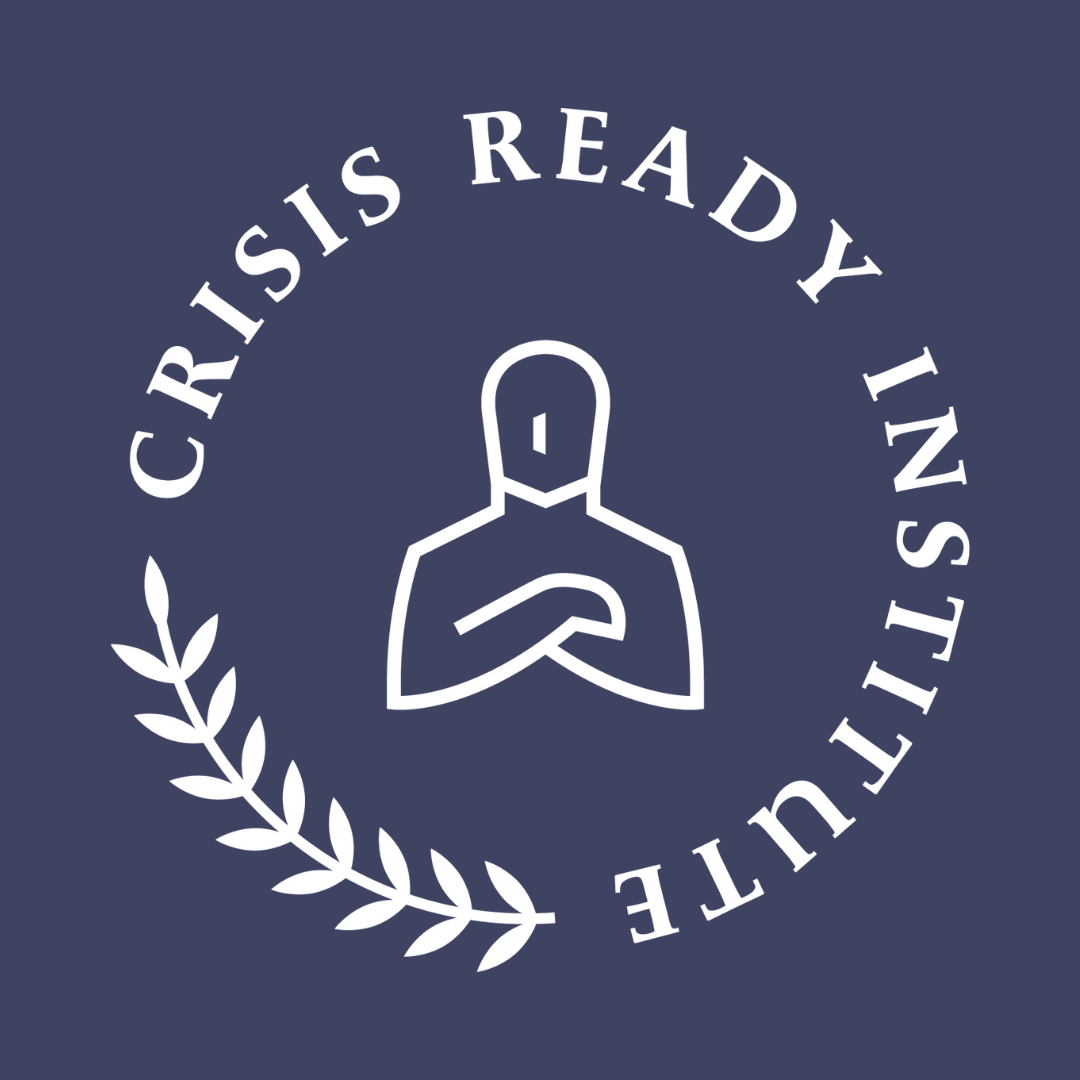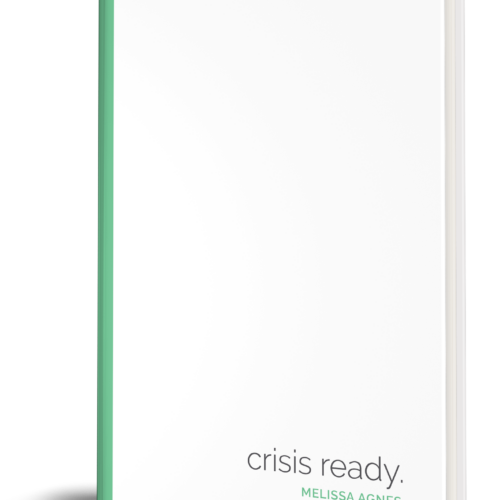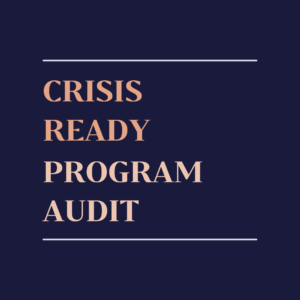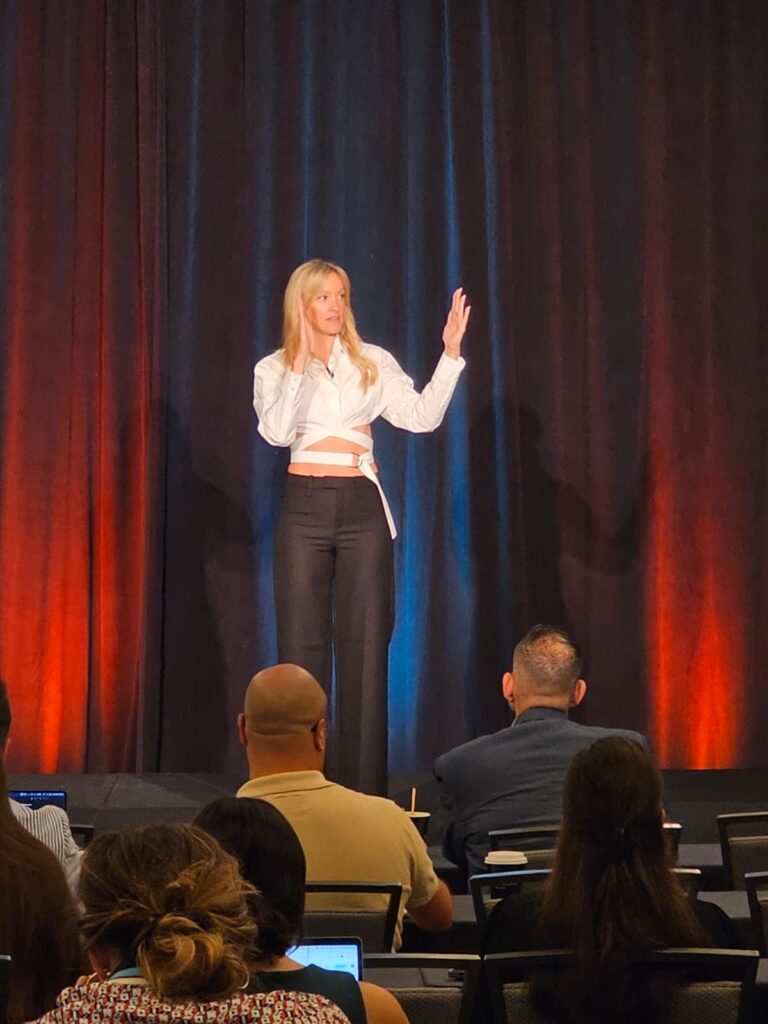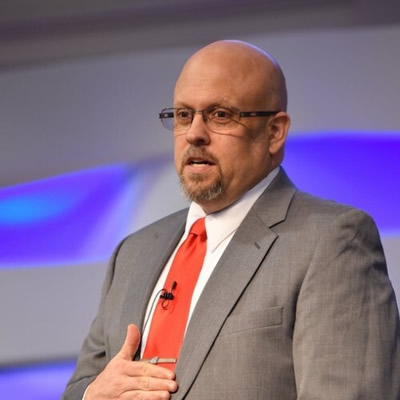When a crisis strikes, an organization needs to respond with the right actions and the right communication, and both need to be done within the right timeline.
Note that I said “when” and not “if.”
WHEN faced with a crisis, an organization can take all the right actions to fix the situation — BUT if leaders don’t communicate what they’re doing, the organization will suffer a Crisis Response Penalty.
Similarly, leaders can say all the right things —BUT if they fail to affirm their words with positive and aligning actions, they will suffer a Crisis Response Penalty.
And the longer it takes to do both of these things effectively, the more Crisis Response Penalty the organization will suffer…
All right, what the heck is the Crisis Response Penalty?
I first coined the term “Crisis Response Penalty”, or CRP, in my book, Crisis Ready: Building an Invincible Brand in an Uncertain World.
By its very nature, a crisis comes with material impact and consequences. If a situation does not present material impact on the business, the brand, its stakeholders, nor the environment in a meaningful consequential way, it is not a crisis.
The Crisis Response Penalty is the added material impact that comes as a direct consequence for ineffective and, thereby, unsuccessful crisis management.
In other words, the longer it takes an organization or a brand to effectively respond to a crisis or viral issue, the more:
- Ownership of the narrative it loses;
- Trust and credibility it destroys; and
- Material impact it suffers.
The material impact could involve people (whether internal or external to the organization), the environment (here we could be talking about the planet or the economy, depending on the organization and its impact), the organization’s operations, its reputation, and/or its bottom line.
And here’s the good news: while there’s so much that happens within a crisis that we do not and cannot control, the Crisis Response Penalty is within your and your team’s power to mitigate.
The more effective the actions and communications of your crisis response are, the less Crisis Response Penalty you will suffer, and the more you will be able to transform the crisis into a brand-building, trust-strengthening opportunity.
Let’s look at an example.
In April 2017, a video of a passenger being physically abused and dragged off a United Airlines plane went viral.
Dr. David Dao was a paying customer on a fully booked flight. He had been randomly selected to make room for four United Airlines employees who needed to be on board to make their next assignment. At the time, rebooking passengers when no one volunteered to give up their seat was a standard practice for commercial airlines accommodating deadheading employees.
However, Dr. Dao was already seated when he was asked to leave, and as he had paid for his seat and had patients waiting for him at his destination, he refused to get off the plane. The situation escalated. United Airlines employees called in airport security.
Passengers recorded Dr. Dao screaming as security dragged him on his back, down the aisle and off the plane, his glasses askew and his face bloody.
How did United Airlines respond?
The crisis was bad enough: how could an airline treat a paying customer — a human being — so horrendously?! And, if you can imagine, United Airlines’ response made everything even worse.
Their first mistake was waiting to respond. A whole 18 hours passed before they released a public statement. By then, the viral video had angered people around the globe — in China and Vietnam as well as in North America.
Had they been Crisis Ready®, United Airlines would have known to expect such an outcry. They would have recognized that the incident met all of the criteria we teach organizations to look for when evaluating the potential volatility of a crisis.
The video was emotionally compelling and relatable. People could see themselves in Dr. Dao’s shoes, and if it could happen to him, what’s stopping it from happening to them or someone they love?
It also was easily shareable, enticing instantaneous attention from around the globe.
Finally, the likelihood that the incident would provoke a negative emotional reaction towards the organization was high. Given the speed of the viral video, the negative reaction to United Airlines was obvious within minutes of the crisis.
Despite the fact it was airport security employees, not airline employees, who dragged Dr. Dao away, United was inevitably blamed. The airline had a chance to own the narrative with a compassionate, assertive, and human response.
They missed the mark.
In fact, the first public statement from United CEO Oscar Munoz (18 hours after the incident) was callous and ineffective. Munoz called the incident an “upsetting event” and apologized for “re-accommodating” customers. He did not address the physical violence against Dr. Dao.
On the same day, Munuz also released a memo to United employees recapping the incident.
“Our employees followed established procedures for dealing with situations like this. While I deeply regret this situation arose, I also emphatically stand behind all of you,” he wrote.
The internal memo was leaked to the public (a likelihood that should always be expected), making United Airlines, and Munoz himself, appear even more tone deaf to the situation.
On Tuesday, April 11 — a full 48 hours after the incident — Munoz finally released a statement that took “full responsibility” for the “truly horrific event.”
Finally, United Airlines responded effectively. But damage had been done.
What was United Airlines’ Crisis Response Penalty?
In the two days between the incident and their effective response, United’s market capitalization lost $1.4 billion in pre-market trading.
That’s a financial Crisis Response Penalty of $700 million a day.
The crisis also garnered the attention of lawmakers, including 21 Democratic Senators who individually wrote to Munoz to express their “deep concern.” Congress would go on to pass legislation that no longer permitted airlines to involuntarily bump paying customers from overbooked flights.
In this case, United Airlines caused an industry-wide Crisis Response Penalty.
Finally, it was reported that Munoz’s employment agreement had been amended as a direct result of the incident. He was slated to be the next chairman of the board, but no longer.
Thus, the Crisis Response Penalty included a personal toll. As one of the Crisis Ready® Rules states, “No matter what happens to the ship, the captain is always accountable.”
Again, I cannot emphasize this enough: All three of these significant Crisis Response Penalties were avoidable.
Had United released the April 11 statement at the onset of the crisis, the company could have avoided the financial blow. They could have evaded the drastic legislation that has inevitably affected the bottom line of every airline company since.
Had he responded effectively, Oscar Muonz would have added a successfully navigated crisis to his resume. He would have stayed on track to become the future chairman of United Airlines.
An Effective Response is the only way to avoid the Crisis Response Penalty.
As we saw from United’s terrible example, an ineffective response will escalate a crisis and increase the Crisis Response Penalty an organization suffers.
So what makes a response effective?
An effective crisis response combines the right actions with the right communications within the right time frame.
Communicators can say all the right things: all the words of apology, and all the promises to do and be better. However, if the words are not supported by the right actions, the organization will not successfully manage the crisis. It’s important to prove that leaders mean what they say.
On the other hand, all the right actions can happen behind the scenes. The organization may be actively righting wrongs and implementing corrective processes. If nobody knows about them, the organization will destroy trust just as effectively as if they did nothing, because perception is reality.
Both actions and communication must happen simultaneously. And they must be timely.
As goes the Crisis Ready® Rule: “If you don’t own the crisis, the crisis will own you.”
Key takeaways
Crisis is inevitable. Without an effective response to a crisis, organizations will suffer a Crisis Response Penalty.
Fortunately, the Crisis Response Penalty is completely avoidable. Preventing CRP is excellent motivation for an organization to become Crisis Ready®.
If your organization is ill equipped, the Crisis Ready Institute offers a phenomenal course to educate leaders and employees, creating a Crisis Ready® culture.
What are some Crisis Response Penalties that you’ve either personally suffered or have witnessed others suffer? We’d love to hear about your experiences and observations below.




